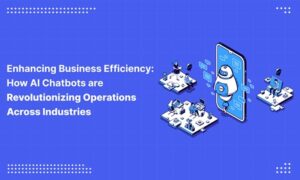
What is cloud computing?
Cloud innovation empowers the reusability of IT assets for putting away huge data sets, creating and facilitating complex applications, and growing computational force and different services on request. Taking out or diminishing interests in enormous scope frameworks and programming, combined with the compensation per-utilize model, altogether decreases IT costs.
Click Here for: Top Cloud Computing Service Vesu Surat
Here are some conventional computing procedures that have assisted ventures with accomplishing extra computing and capacity abilities:
Bunch computing interfaces various PCs in a single area through LAN to function as a solitary PC, improving the consolidated execution of the association.
Network computing empowers coordinated effort between ventures to complete circulated computing occupations utilizing interconnected PCs spread across numerous areas running autonomously.
Utility computing gives web services like computing, extra room, and applications to clients easily through the virtualization of a few backend workers.
Appropriated computing scenes interface universal organizations and associated gadgets, empowering shared computing. Instances of such a cloud framework are ATMs and intranets/workgroups.
Who uses the cloud and why?
Cloud’s advancing highlights are changing the way associations of each sort, size, and industry oversee and measure information. This incorporates everything from using limitless capacity; embracing amazing examination instruments; refreshing applications and framework foundation programming; planning client relationships with the executives (CRM) and endeavor asset the board (ERM); and moving substance and shared applications, just as information for the executives and conveyance applications.
How does cloud computing work?
Cloud computing offers on-request conveyance of advanced assets, permitting associations and individuals the adaptability to take out or decrease heritage information applications and frameworks. With pay-as-costs arise cloud services, clients just receive compensation for their equipment and programming utilization. With cloud computing, associations are getting more nimble, diminishing expenses, developing quicker, and changing their business objectives and goals with incredible investigation instruments.
Kinds of cloud computing services
IaaS
IaaS is a cloud computing model where the virtualized foundation is offered to and overseen for organizations by outer cloud suppliers. With IaaS, organizations can reevaluate capacity, workers, server farm space, and cloud organizing parts associated with the web, offering comparable usefulness to that of the on-premises framework.
Instances of IaaS are robotized, strategy-driven tasks like reinforcement, recuperation, checking, grouping, inner systems administration, and site facilitation. The service supplier is liable for building the workers and capacity, organizing firewalls and security, and building the actual server farm.
Central members offering IaaS are Amazon EC2, Microsoft Azure, Google Cloud Platform (GCP), GoGrid, Rackspace, and DigitalOcean, among others.
PaaS
PaaS expands on IaaS. With PaaS, cloud sellers convey cloud programming and equipment foundation segments like middleware and working frameworks that are needed to create and test applications. The PaaS climate empowers clients to introduce and have informational collections, advancement apparatuses, and business investigation applications without the intricacy of building and keeping up the foundation.
Vital participants offering PaaS are Bluemix, CloudBees, Salesforce.com, Google App Engine, Heroku, Amazon Web Services (AWS), Microsoft Azure, OpenShift, Oracle Cloud, and SAP.
Programming as a Service (SaaS)
SaaS is exceptional in that it fuses the two IaaS and PaaS. With SaaS, the cloud service supplier conveys the whole programming suite as compensation for every utilization model. SaaS permits clients to effectively get to programming applications, for example, messages by means of the web.
The most notable SaaS applications are Microsoft Office 360, AppDynamics, Adobe Creative Cloud, Google G Suite, Zoho, Salesforce, Marketo, Oracle CRM, Pardot Marketing Automation, and SAP Business ByDesign.
Kinds of cloud organizations
Public Cloud
The public cloud is the most conservative alternative for clients on the grounds that the service supplier bears the costs of data transmission and framework. It has restricted arrangements, and the expense is dictated by the use limit. Notwithstanding the public cloud’s high dependability, lower costs, zero upkeep, and on-request versatility, it isn’t reasonable for associations working with delicate information and severe security guidelines.
Private Cloud
The private cloud gives more command over adaptability, versatility, and adaptability, all while improving the security of resources and business activities. A private cloud framework can be based on-premises or moved to an outside service supplier. Its fundamental benefit over the public cloud is its capacity to keep up the equipment and programming climate of a private organization solely for the proprietor. Enormous and medium-scale monetary undertakings, just as government organizations, ordinarily decide on private clouds.
Mixture Cloud
Mixture clouds are a mix of private and public clouds. This gives greater adaptability by permitting organizations to have power over basic tasks and resources. Cross-cloud engineering empowers organizations to oversee private and public clouds through one entry and improve responsibilities for every climate’s qualities. For instance, organizations can utilize the public cloud for running high-volume applications like messages and use private clouds for delicate resources like financials, just as information recuperation, in addition to dispensing with a vacation during planned support.
10 benefits of cloud computing
1. Adaptability
Cloud computing empowers quick adaptability of framework limits contingent upon business needs. Information stockpiling limit, preparing force, and systems administration would all be able to be scaled up or down rapidly and effectively with almost no interruption or vacation.
2. Availability
Cloud computing enables endeavors to convey their applications across the globe to offer support to their clients at whatever point and any place it is required. This permits clients to have an indistinguishable advanced encounter unhindered by geographic restrictions.
3. Operational Agility
Organizations should immediately scale their cloud limit by getting to transfer speed requests from far-off workers. In the event that the business request is expanded, the endeavor can turn up its computing limit and IT asset accessibility quickly. This subsequent operational spryness improves profitability, effectiveness, and development, and it offers an upper hand and opportunity for the interruption.
4. Decreased Expenditure
With the cloud, undertakings can zero in on building their businesses as opposed to putting resources into equipment frameworks and server farms that either stay inactive or underutilized. As referenced previously, public cloud costs rely on utilization and remain a variable cost.
5. Programmed Updates and Patches
At the point when ventures manage different programming, working frameworks, and applications from various merchants, they require programming and security updates to be performed consistently. This can be a tedious cycle, and the personal time for framework upkeep implies a loss of efficiency. A cloud service supplier or an oversaw service supplier can deal with these naturally, saving time and manual exertion on support.
6. Fiasco Recovery
Conveying vigorous cloud reinforcement and fiasco recuperation plans is urgent for business congruity. Conventional on-prem reinforcement and recuperation arrangements are tedious to keep up and don’t generally offer full recuperation in case of a significant interruption. Cloud-based fiasco recuperation considers speedier recuperation of information and applications and limits personal time and information misfortune.
7. High security
Ensuring touchy, recognizable, or potentially monetary data is an extensive test for CIOs. Progressed cloud security highlights, be that as it may, diminish the dangers of data misfortune and digital covertness.
8. Decreased carbon footprint
In contrast with conventional on-prem workers, the cloud framework fundamentally decreases energy utilization, IT foundation, and utilization by offering assets according to request, in this way diminishing e-waste and its unfriendly effect on the climate.
9. Adaptability
The cloud permits anybody to dispatch new items and services from any place easily. Moreover, being liberated from guidelines forced by outsider IT suppliers and pointless monetary responsibility improves business adaptability and deftness.
10. Endeavor Collaboration
Aside from those utilizing the upgraded safety efforts of private clouds, organization data no longer exists in storehouses. Brought together, documentation control on cloud-based, record-sharing, and social correspondence applications offers straightforwardness and permeability into work measures, smoothing out data streams, and a better-empowering joint effort between groups, offices, and representatives situated in various time regions, all of which prompts improved efficiency and primary concern.






